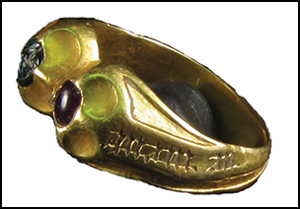Article contents
Love and hope: emotions, dress accessories and a plough in later medieval Britain, c. AD 1250–1500
Published online by Cambridge University Press: 21 May 2020
Abstract

Human emotion is of interest across a wide range of disciplines, but in the field of archaeology it has received attention only very recently. This article contributes to the archaeology of emotion through a focus on later medieval objects in Britain. It identifies ‘emotants’ within the archaeological record, defined as evidence that can communicate, create or intensify emotion(s). By exploring emotants in the form of inscribed later medieval finger rings and brooches, and an iron plough coulter, the author aims to introduce a neologism that can be employed to advance this challenging yet untapped field of study.
- Type
- Research Article
- Information
- Copyright
- Copyright © Antiquity Publications Ltd, 2020
References
- 6
- Cited by




